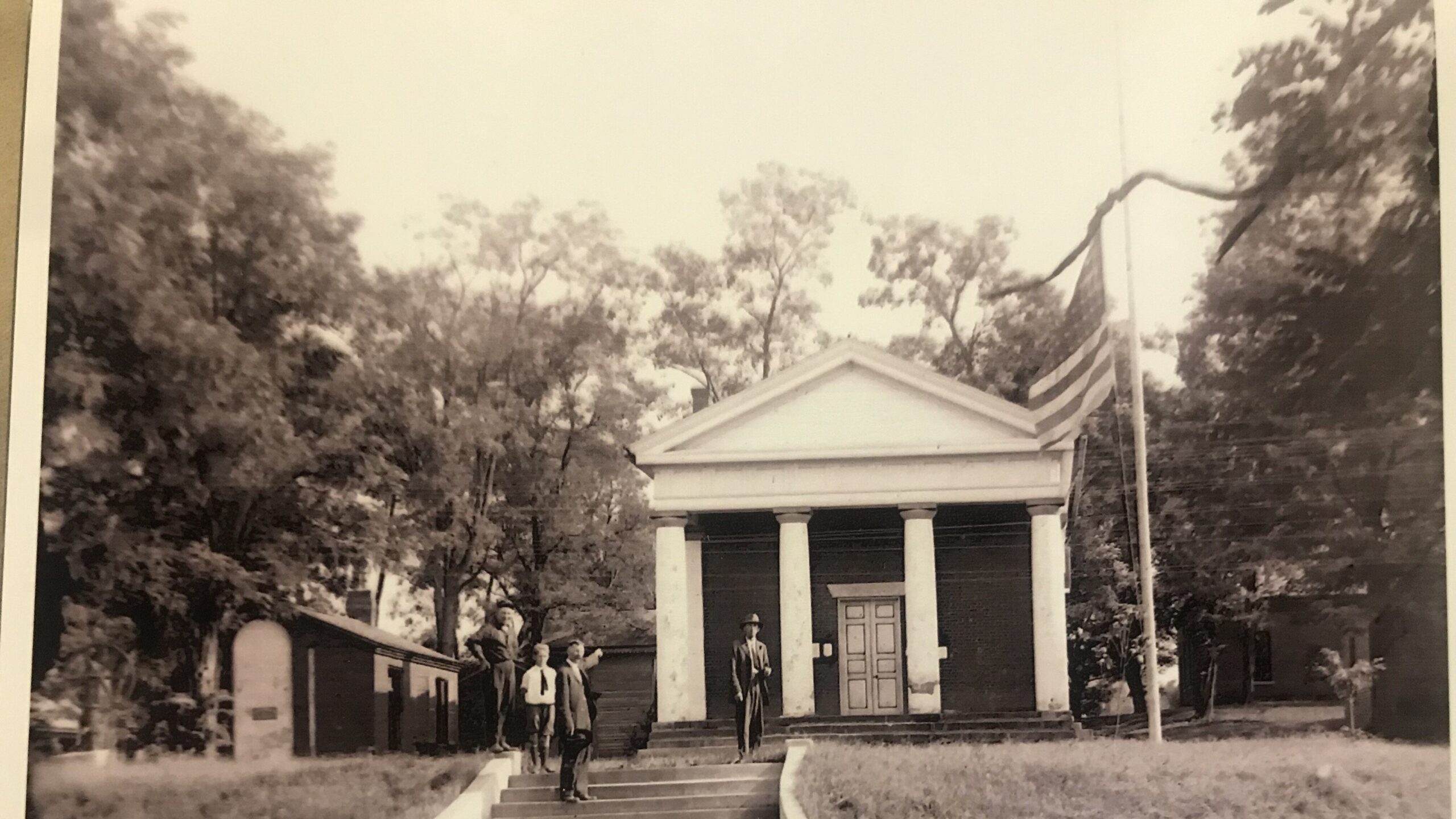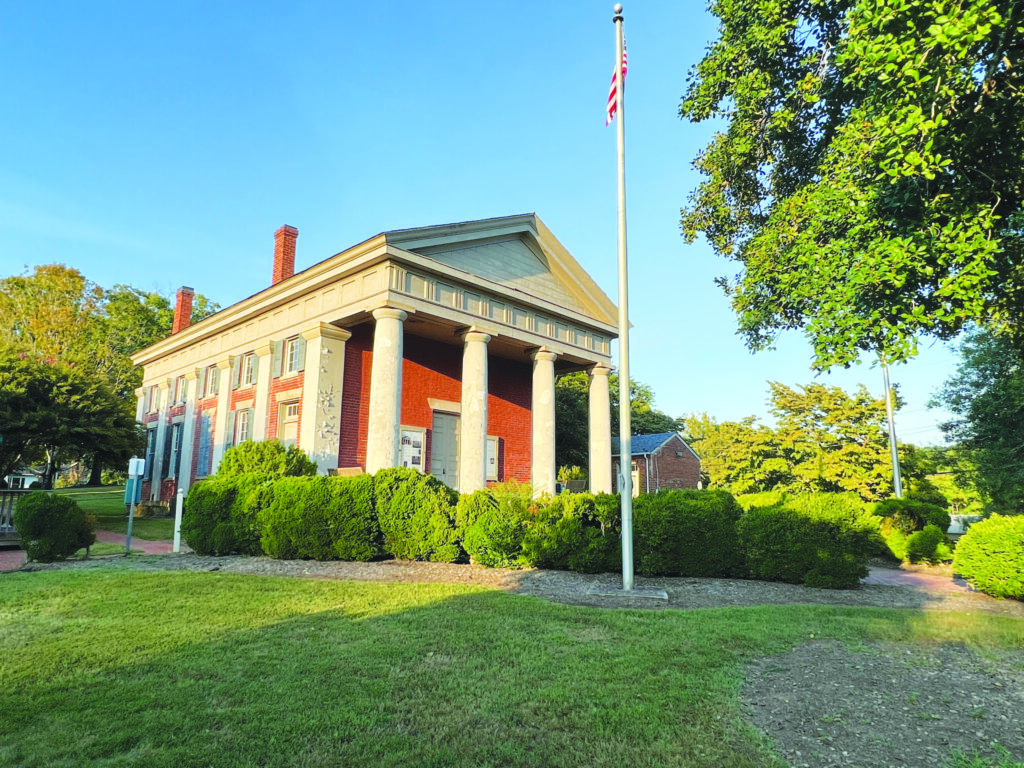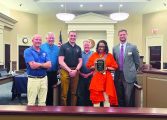Press Release
The Fluvanna Historical Society working in collaboration with the county of Fluvanna, has advanced one of the largest awards for historic preservation in its history: the approval of a state budget amendment providing $310,000 towards the restoration of the county’s historic 1830 courthouse. The General Assembly-passed budget now heads to Gov. Glenn Youngkin.

A truly collaborative effort, the funding effort was led by society board member, Kathleen Kilpatrick, a local resident and a longtime, now retired, director of the Virginia Department of Historic Resources, with help from David Blount, director of legislative services for the Thomas Jefferson Planning District Com-mission. The amendment was sponsored and shepherded through the assembly by Del. Lee Ware, who currently represents a portion of Fluvanna. Said Del. Ware, “Historic preservation has always been a priority of mine, not least because of my studies and long years of teaching history. To have gained approval of a budget amendment to help inaugurate preservation of the original Fluvanna County court-house is, for me, one of the signal achievements of the 2023 General Assembly.”
Fluvanna Historical Society president Marvin Moss, noted that, “the historical society played a key role two years ago in ensuring that the courthouse, a Fluvanna landmark and symbol of the county’s identity, will be restored using time-tested preservation methods. We encouraged the county, a great steward of the courthouse for nearly 200 years, to contract for an Historical Structures Report (HSR), which not only provided information on the needs of the building but also how to address them and maintain the structure for the future.”

The county Board of Supervisors agreed to move forward with undertaking the HSR and approved funding to match the society’s contributions for the cost of the report. Once the report was completed, the Board of Supervisors enthusiastically approved moving forward with the restoration and appropriated $452,673 in the FY24 budget for that purpose. Previously, the Board had approved $260,130 (FY18 – FY21) for urgent repairs and the HSR. Kilpatrick, a proponent of the development and use of an HSR, along with historical society board members, volunteered to research and write key sections of the report in order to reduce costs and to allow the architects and technical experts to focus on field investigations and analysis. Kilpatrick authored a compelling case for the architectural and historical significance of the courthouse, with society board member Benjamin Ford of Rivanna Archaeological Services providing historic background information, documenting the development and changes to the court-house over time, with invaluable assistance from society Director Tricia Johnson.
The report firmly established what had long been held as true – that the courthouse is not only a local treasure but also a first order state and nationally important historic resource. “It is impossible to exaggerate what an influential courthouse Fluvanna has; it is part of the work conceived and championed by Thomas Jefferson to return to Classical architecture and thereby give form, expression and identity to public architecture for the young American republic. It is singularly important because it is the first of the Virginia courthouses to use the Greek order, setting a new example for courthouses to follow here in Virginia and across the nation,” notes Kilpatrick.
The courthouse was designed by Fluvanna’s General John Hartwell Cocke of Upper Bremo, a self-taught architect, friend, and protégée of the much older Thomas Jefferson, who, with Jefferson, was a founder of the University of Virginia. As an early example of fruitful partnership, Fluvanna County authorized and funded the courthouse construction, while Methodist minister, entrepreneur, and builder Walker Timberlake worked with Cocke to build it in accordance with Cocke’s design and direction, on land donated by Timberlake for a county courthouse.
Construction of the courthouse was made possible by the labor of the enslaved of Bremo; Ford’s and Johnson’s research critically documented the foundational contributions of these craftsmen, and even uncovered the names of some of them. Two current members of the society’s Board of Directors, Joe Creasy and Horace Scruggs, are direct descendants of enslaved families from Bremo. “This courthouse truly belongs to the entire community,” said Mozell Booker, Chair of the Fluvanna County Board of Supervisors, “It is very fortunate that we have been able to identify the enslaved people who had the skills to construct this building. It is time that we give credit to these craftsmen, and that we acknowledge and respect their contributions.”
“These collaborations are important,” said County Administrator Eric Dahl, “and Fluvanna is thankful for its relationship with the historical society and appreciative of the allocation from the General Assembly thanks to Del. Lee Ware, who we will surely miss with his shift to a new district.”
As a result of redistricting following the 2020 census, Del. Ware will no longer represent Fluvanna. “It has been a privilege and a distinct personal pleasure to work with Fluvanna officials and citizens during the past decade. As I turn my attentions southward to a new legislative district, I will retain fond memories of my times in Fluvanna. I extend my warmest good wishes to everyone who will carry on with restoration of the Historic Courthouse,” Delegate Ware noted.
Calvin Hickman, Fluvanna County director of public works, and an enthusiastic restoration contractor in his previous occupation, noted how these new funds will, “allow us to move forward smartly with ad-dressing the needs of our courthouse. We are eager,” he added, “to accelerate our work, now that phase one funds are in place.”
The society’s members and its many friends and supporters have over the years raised significant funds to support Fluvanna County, including the restoration of the Pleasant Grove House and its summer kitchen, and the design and construction of the Fluvanna Farm Heritage Museum. Their continuing efforts to raise funds to support the courthouse restoration is a significant new step in that partnership.




